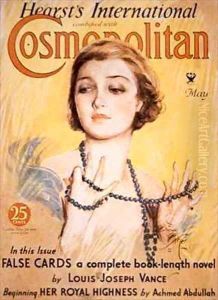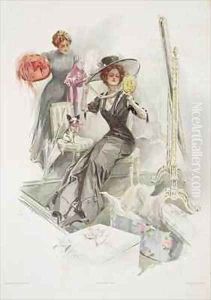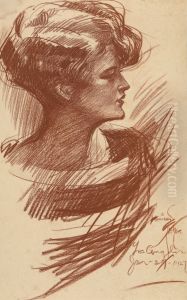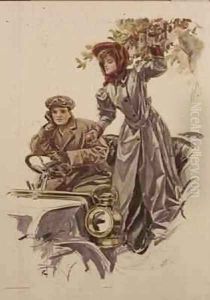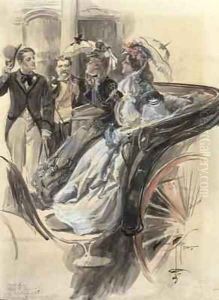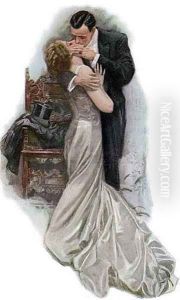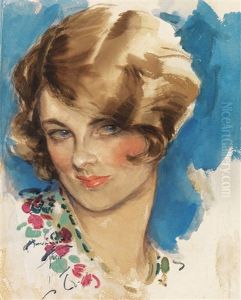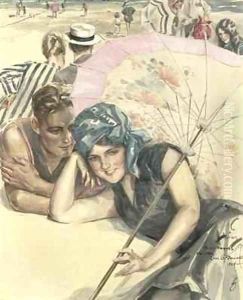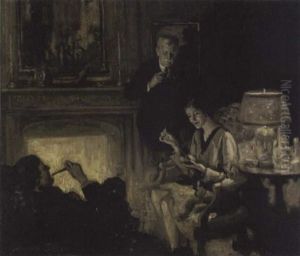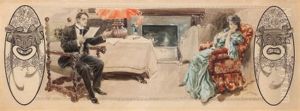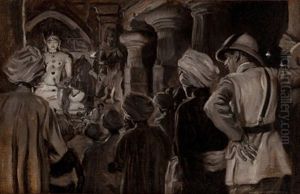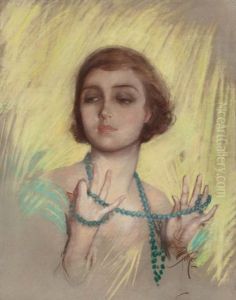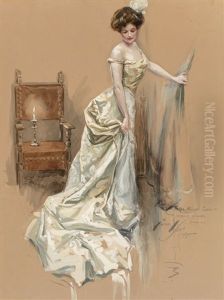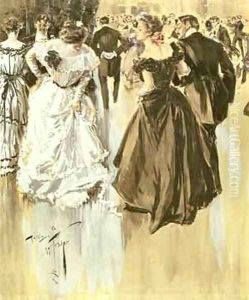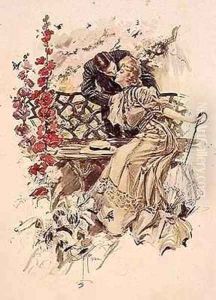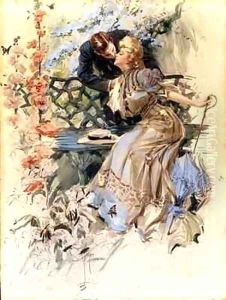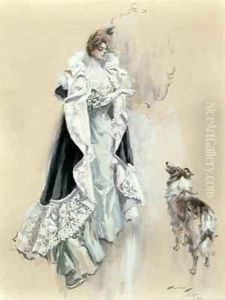Harrison Fisher Paintings
Harrison Fisher was an American illustrator known for his works that primarily featured beautiful women, earning him the nickname 'The Father of a Thousand Girls.' Born on July 27, 1875, in Brooklyn, New York, Fisher demonstrated an early talent for art, influenced significantly by his father, Hugo Antoine Fisher, who was an artist himself. The Fisher family moved to San Francisco, where Harrison's artistic aspirations continued to flourish.
Fisher's professional career began in the late 1890s when he started providing illustrations for newspapers and magazines. His big break came when he started working for the 'San Francisco Call.' However, it was his association with the Pictorial Review and, more notably, with Cosmopolitan magazine that made him a household name. At Cosmopolitan, Fisher's cover illustrations defined the magazine's aesthetic during the early 20th century and played a significant role in its success.
His depiction of the 'Fisher Girl'—an idealized, independent, and beautiful American woman—became iconic. These images not only captured the beauty and spirit of women during the Edwardian era and beyond but also resonated with societal shifts towards more liberated and active roles for women. Unlike the more voluptuous figures popularized by his contemporaries, Fisher's women were athletic, smart, and exuded a subtle sensuality, aligning with the changing perceptions of femininity.
Beyond magazine covers, Fisher also worked on book illustrations and war posters during World War I, showcasing his versatility and patriotic spirit. Despite his popularity, he rarely gave interviews, preferring to let his work speak for itself. Fisher's influence extended beyond his lifetime, affecting the standards of beauty and the role of commercial illustration in American culture.
Harrison Fisher passed away on January 19, 1934, in New York City. Today, his work is celebrated for its artistic quality and contribution to the portrayal of American women in art. Fisher's illustrations remain a testament to the era's evolving social attitudes and continue to be admired for their elegance and historical significance.


